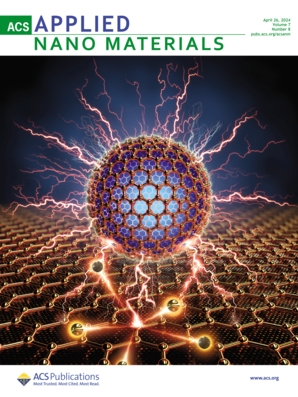Spatiotemporal delivery of BMP-2 and FGF-18 in 3D-bioprinted tri-phasic osteochondral scaffolds enhanced compartmentalized osteogenic and chondrogenic differentiation of mesenchymal stem cells isolated from rats with varied organizational morphologies
IF 5.3
2区 材料科学
Q2 MATERIALS SCIENCE, MULTIDISCIPLINARY
引用次数: 0
Abstract
Replicating the heterogeneous structure and promoting compartmentalized osteogenesis/chondrogenesis are critical considerations in designing scaffolds for osteochondral tissue regeneration. However, desirable osteochondral regeneration cannot be achieved mainly due to the absence of effective delivery strategies for growth factors (GFs) and the insufficiency of desirable organizational morphologies for seed cells. Herein, we developed a tri-phasic osteochondral scaffold consisting of bone morphogenetic protein-2 (BMP-2)-loaded subchondral layer, fibroblast growth factor-18 (FGF-18)-loaded cartilage layer, and an interface layer that acted as a barrier to reduce the mutual interference of GFs, via cryogenic 3D bioprinting. BMP-2 could exert osteogenic effects for 14 days, and FGF-18 could exert chondrogenic effects for 21 days, demonstrating the time-controlled release function of BMP-2 and FGF-18. By further seeding discrete rat bone marrow mesenchymal stem cells (rBMSCs) and rBMSC microspheres, respectively, onto the subchondral layer and cartilage layer, the engineered cell-laden osteochondral tissue was constructed. The spatiotemporal release of BMP-2 and FGF-18 in the subchondral layer and cartilage layer promoted the osteogenic differentiation of discrete rBMSCs and chondrogenic differentiation of rBMSC microspheres in the subchondral layer and cartilage layer, respectively. In summary, by seeding rBMSCs with varied organizational morphologies in 3D-printed osteochondral scaffolds with a spatiotemporally controlled strategy, engineered osteochondral tissue with compartmentalized osteogenic/chondrogenic differentiation potent can be formed, displaying a facile and promising way to achieve desirable osteochondral tissue regeneration.在三维生物打印三相骨软骨支架中按时空递送 BMP-2 和 FGF-18,增强了从不同组织形态大鼠体内分离的间充质干细胞的分区成骨和软骨分化能力
在设计骨软骨组织再生支架时,复制异质结构和促进分区成骨/软骨生成是关键的考虑因素。然而,由于缺乏有效的生长因子(GFs)输送策略以及种子细胞缺乏理想的组织形态,理想的骨软骨再生无法实现。在此,我们通过低温三维生物打印技术开发了一种三相骨软骨支架,包括载入骨形态发生蛋白-2(BMP-2)的软骨下层、载入成纤维细胞生长因子-18(FGF-18)的软骨层以及作为屏障以减少生长因子相互干扰的界面层。BMP-2可在14天内发挥成骨作用,FGF-18可在21天内发挥软骨作用,证明了BMP-2和FGF-18的时间控制释放功能。通过将离散的大鼠骨髓间充质干细胞(rBMSCs)和rBMSCs微球分别进一步播种到软骨下层和软骨层,构建了含有细胞的工程骨软骨组织。软骨下层和软骨层中 BMP-2 和 FGF-18 的时空释放分别促进了软骨下层和软骨层中离散 rBMSCs 的成骨分化和 rBMSC 微球的软骨分化。总之,通过时空控制策略,在三维打印的骨软骨支架中播种不同组织形态的rBMSCs,可以形成具有分区成骨/软骨分化潜能的工程骨软骨组织,为实现理想的骨软骨组织再生提供了一种简便而有前景的方法。
本文章由计算机程序翻译,如有差异,请以英文原文为准。
求助全文
约1分钟内获得全文
求助全文
来源期刊

ACS Applied Nano Materials
Multiple-
CiteScore
8.30
自引率
3.40%
发文量
1601
期刊介绍:
ACS Applied Nano Materials is an interdisciplinary journal publishing original research covering all aspects of engineering, chemistry, physics and biology relevant to applications of nanomaterials. The journal is devoted to reports of new and original experimental and theoretical research of an applied nature that integrate knowledge in the areas of materials, engineering, physics, bioscience, and chemistry into important applications of nanomaterials.
文献相关原料
公司名称
产品信息
麦克林
Dichloromethane (DCM)
阿拉丁
β-tricalcium phosphate particles
 求助内容:
求助内容: 应助结果提醒方式:
应助结果提醒方式:


